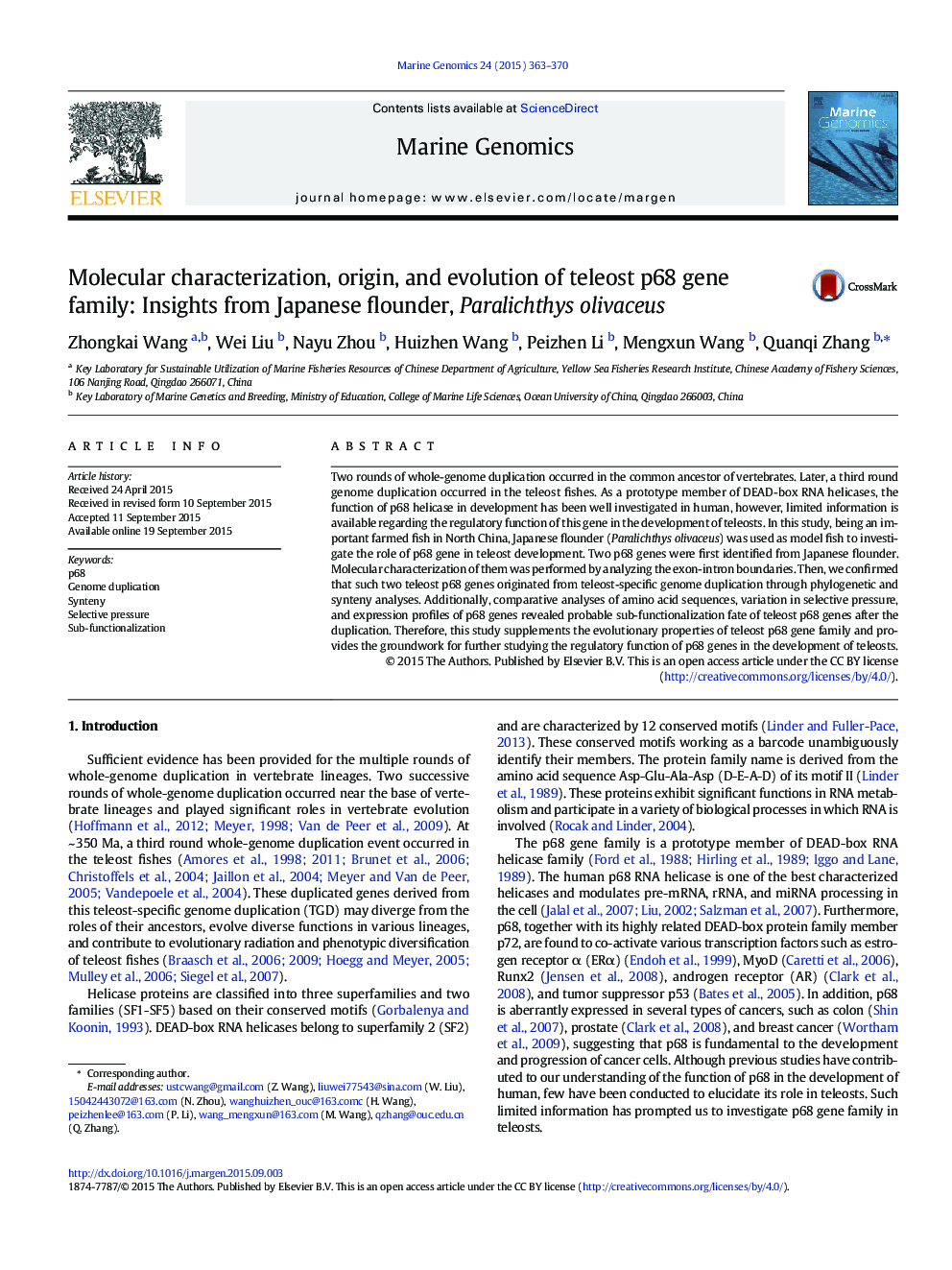| Article ID | Journal | Published Year | Pages | File Type |
|---|---|---|---|---|
| 10877929 | Marine Genomics | 2015 | 8 Pages |
Abstract
Two rounds of whole-genome duplication occurred in the common ancestor of vertebrates. Later, a third round genome duplication occurred in the teleost fishes. As a prototype member of DEAD-box RNA helicases, the function of p68 helicase in development has been well investigated in human, however, limited information is available regarding the regulatory function of this gene in the development of teleosts. In this study, being an important farmed fish in North China, Japanese flounder (Paralichthys olivaceus) was used as model fish to investigate the role of p68 gene in teleost development. Two p68 genes were first identified from Japanese flounder. Molecular characterization of them was performed by analyzing the exon-intron boundaries. Then, we confirmed that such two teleost p68 genes originated from teleost-specific genome duplication through phylogenetic and synteny analyses. Additionally, comparative analyses of amino acid sequences, variation in selective pressure, and expression profiles of p68 genes revealed probable sub-functionalization fate of teleost p68 genes after the duplication. Therefore, this study supplements the evolutionary properties of teleost p68 gene family and provides the groundwork for further studying the regulatory function of p68 genes in the development of teleosts.
Related Topics
Physical Sciences and Engineering
Earth and Planetary Sciences
Earth and Planetary Sciences (General)
Authors
Zhongkai Wang, Wei Liu, Nayu Zhou, Huizhen Wang, Peizhen Li, Mengxun Wang, Quanqi Zhang,
